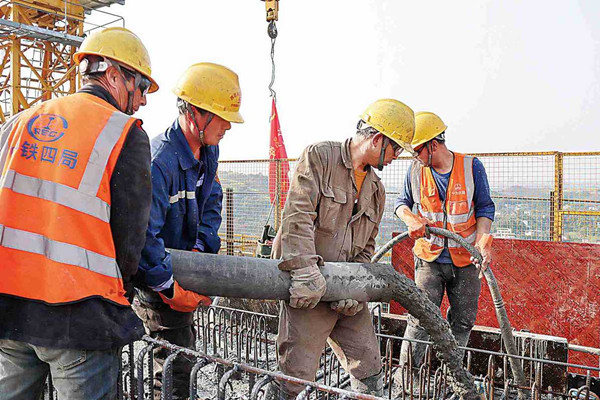CREC4 Makes Strides in Super Bridge Project

CREC4 builders pour cement on the No 41 pier of Tuojiang super bridge in Sichuan Province on Sunday. [Photo provided to China Daily]
The steel bars which weigh more than 150 metric tons on the two blocks are also complex, as there were 23,000 bars in 69 kinds of forms, posing high risks in construction in such a limited working space, Yin said.
The joint research team set up a task force to make technological breakthroughs, laying a solid technical foundation for the successful pouring, he said.
Zhang said the Chongqing-Kunming HSR, which runs 699 kilometers with a designed speed of 350 kilometers per hour for the trains, is an important component of the Xi'an-Kunming section of the Beijing-Kunming Corridor.
Upon completion, a new HSR channel will be added between Chongqing and Kunming, greatly improving the mobility of residents along the line and ushering in a "new layout" for the economic life of related regions.
Zhang noted that the Beijing-Kunming HSR Corridor, as a north-south artery being built section-by-section, is expected to be completed and put into operation by 2026.
Qian Zhongyue, 33 and a father of one, is the leader of the construction team. He said he is quite happy with his job at CREC4 in building the Tuojiang super bridge, as he is making a contribution to this national HSR artery.
"My biggest feeling at the construction site is I'm very busy, because as a team leader, I have to lead nearly 70 workers at the worksite every day. Furthermore, our project has two shifts-a day shift and a night shift," he said. "But for a big project like this, it is worthwhile."



